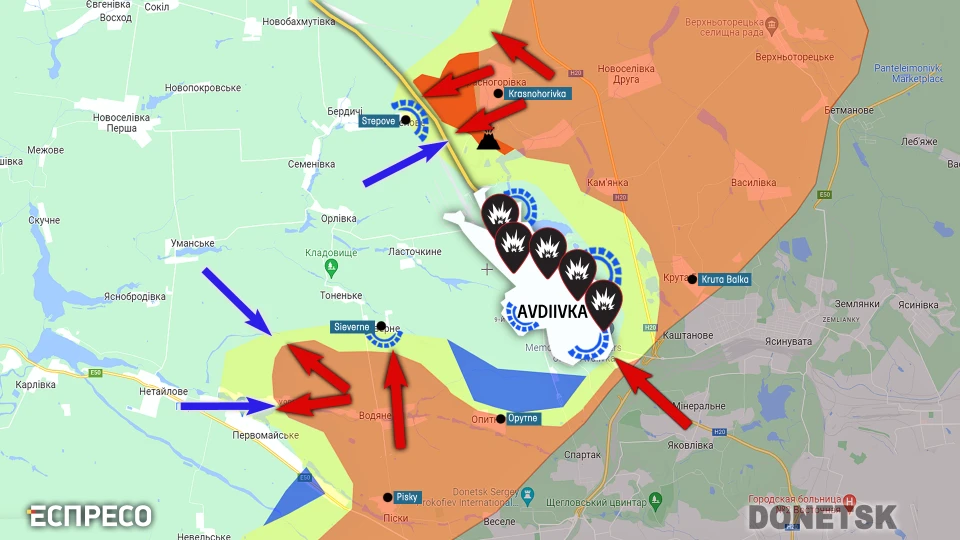
Ukraine must produce its own ammunition to meet its army's needs – military expert Zgurets
Ammunition, infantry training, and a large number of drones are crucial factors that will affect the situation on any front, including the Avdiivka and Bakhmut directions
The AFU's ammunition needs
Today, on October 31, the Supreme Commander-in-Chief's Staff had a meeting. After the meeting, Ukraine's President, Volodymyr Zelenskyy, talked about the situation along the entire front line, including places like Kupyansk, Avdiivka, Kherson region, security in the Black Sea area, air defense, and the production of NATO-standard artillery systems and ammunition in Ukraine.
Let's focus on the topic of ammunition. The Defense Minister of Ukraine, Rustem Umerov, mentioned discussing the development of the defense industry with the Minister of Strategy and Industry. They've mentioned that more weapons are coming, but we still don't have clear information about how much domestic ammunition is being produced to meet the needs of the Armed Forces. The European Union countries had promised to provide Ukraine with 1 million rounds of ammunition by next March, but they've only managed to send 300,000 so far due to technical and industrial limitations.
There's an interesting analysis of the ammunition needs for the Armed Forces. A big European ammunition manufacturer, Nammo, looked at the ammunition situation in Europe in relation to the needs of NATO armies. They shared their findings on the Norwegian Parliament's website, and some of their conclusions apply to Ukraine as well. According to their analysis, the Armed Forces need 600,000 rounds of ammunition every month. This is much more than the 100,000 or 200,000 rounds we are using at best. It's about 20,000 shells each day. This aligns with the capabilities of our NATO-standard artillery currently in use by the Ukrainian army. So, the yearly requirement for our army is 7.2 million rounds. European countries have their own needs, adding up to another 13 million rounds to maintain stocks for 30 days of NATO combat. In total, Europe's defense industry should produce about 20 million rounds in a short timeframe. Currently, European facilities can only make less than 500,000 artillery rounds each year. This shows a pressing need to boost production.
I'm hopeful that the meeting today addressed the need for more substantial action from the Ukrainian defense industry to establish its ammunition production. We need our own factory for ammunition. Ammunition, infantry training, and a strong presence of drones are crucial factors that will impact the situation on any part of the front, including the Avdiivka and Bakhmut directions.
Frontline situation in the Avdiivka area
The Avdiivka bridgehead is like a piece of land surrounded by enemy forces from the north and south.

Photo: Espreso
The distance between these areas is around 8-10 kilometers, depending on how you measure it. Since October 10, there have been several significant enemy attacks in this region. These attacks were fought off, and the enemy suffered heavy losses. According to the latest information from the General Staff, the level of fighting in Avdiivka and Marinka has slightly decreased.
Maksym Morozov, a Major in the Ministry of Internal Affairs and an officer in the Freedom Legio, has stated that there is still a high level of combat activity in the Avdiivka region. The enemy continues to launch air attacks on Avdiivka and the nearby villages, as well as on Defense Forces' positions. The enemy keeps trying to break through, finding weak points in the Defense Forces' defenses, and gathering troops from both the south and north. However, they have not succeeded. The Russians are keen on reaching the railway near Stepne or Berdychi, but their efforts seem to be in vain. It's noticed that the enemy is accumulating its forces, with a significant number of troops also positioned in Donetsk.
Morozov mentioned that the invaders, after facing significant failures in the Avdiivka direction, might consider transferring their reserves to another area like Marinka or Vuhledar. Currently, there's no clear sign of a strategic decision from the enemy to stop encircling Avdiivka. The Russians may think they are closing in, but the map doesn't necessarily reflect the reality on the ground.
Morozov also explained that, from a logistical perspective, the primary paved road leading to Avdiivka runs through Orlivka. There are dirt roads as well, but the main access goes through Orlivka. There are also paved roads through Berdychi and Umanske, but they all connect in Orlivka. Despite the enemy's attempts to disrupt logistics, they haven't succeeded, and support for the Armed Forces continues to flow.
Oncilla armored personnel carriers
Now, let's discuss some new equipment and weapons with significant Ukrainian involvement. One example is the Oncilla armored personnel carrier, actively in use along the front lines. Recently, Defense Express journalists received a video showing an Oncilla APC surviving a hit from an anti-tank mine during a mission by the Fury assault brigade. Despite the front wheel coming off, the soldiers were unharmed, thanks to the protection provided by the Oncilla armored personnel carrier.
This APC has Ukrainian origins and is based on the Ukrainian Dozor APC, now manufactured in Poland. Ukraine's Construction Bureau Beryl is the technical partner responsible for support, maintenance, and design improvements.
Oleksandr Leshchenko, Deputy Director of Beryl, explained that the Oncilla is used by the Ministry of Defense, National Police, and National Guard of Ukraine. Its typical tasks include providing fire support to assault groups, conducting patrols, setting ambushes, and performing raid missions. The feedback from using the Oncilla has been positive, with no casualties among Ukrainian servicemen, even in cases involving explosions. This vehicle effectively counters threats and saves lives on the front lines.
Leshchenko pointed out that the Oncilla is a classic armored personnel carrier with a monocoque structure, concealing the chassis components inside its body for protection against combat and environmental damage. Thanks to its cylindrical body and double bottom, the Oncilla offers strong protection against landmines.
The repair of Oncilla armored personnel carriers in Ukraine is handled by Beryl. They maintain crews to handle regular maintenance and send more severely damaged units to the Polish plant for extensive repairs. Exporting these vehicles outside Ukraine has been explored, and the damaged APC from the video is expected to be fully repaired by the end of November, returning to the frontline. Looking ahead to next year, there are plans to produce and supply up to 200 vehicles to the Ukrainian troops, a feasible goal given the available resources and trained personnel.
- News













































